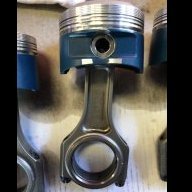Rounded My Sump Plug!
Announcements
-
Similar Content
-
Latest Posts
-
Curious to why you're not getting Jesse to do the exhaust, seeing that he has just done 2 GTRs with Aes valves.
-
By Murray_Calavera · Posted
What extra parts are you thinking you'll need to run e85 compared to e30? -
I'm not aware of e30 in Australia, but I'm pretty sure e85 is still around. You really want a setup with an ethanol sensor so you can run any mix of ethanol depending on what you can access. Fuel Check NSW app shows 14 site in sydney metro with e85. What are you adding, will you put in bigger turbs too? Apparently the wastegates are pretty small and can't bypass enough as you run more boost. I'm sticking to 1.3 bar with 98 on the standard turbos with my tune on advice from the tuner, and boost drops significantly in the top end; apparently larger turbos with larger wastegates are needed to get anywhere meaningful from there.
-
Amazing work Duncan! It is never easy to pick up someone elses project and work all the parts out that are missing
-
Hey Ppl, I am about to tuned my Infiniti Q60 with E-85 and if you can tell me some location where I can top up my car that would be great. But my other question, is E-30 available because this tuned requires less mods parts and any info you can offer would be greatly appreciated too!!
-






Recommended Posts
Create an account or sign in to comment
You need to be a member in order to leave a comment
Create an account
Sign up for a new account in our community. It's easy!
Register a new accountSign in
Already have an account? Sign in here.
Sign In Now